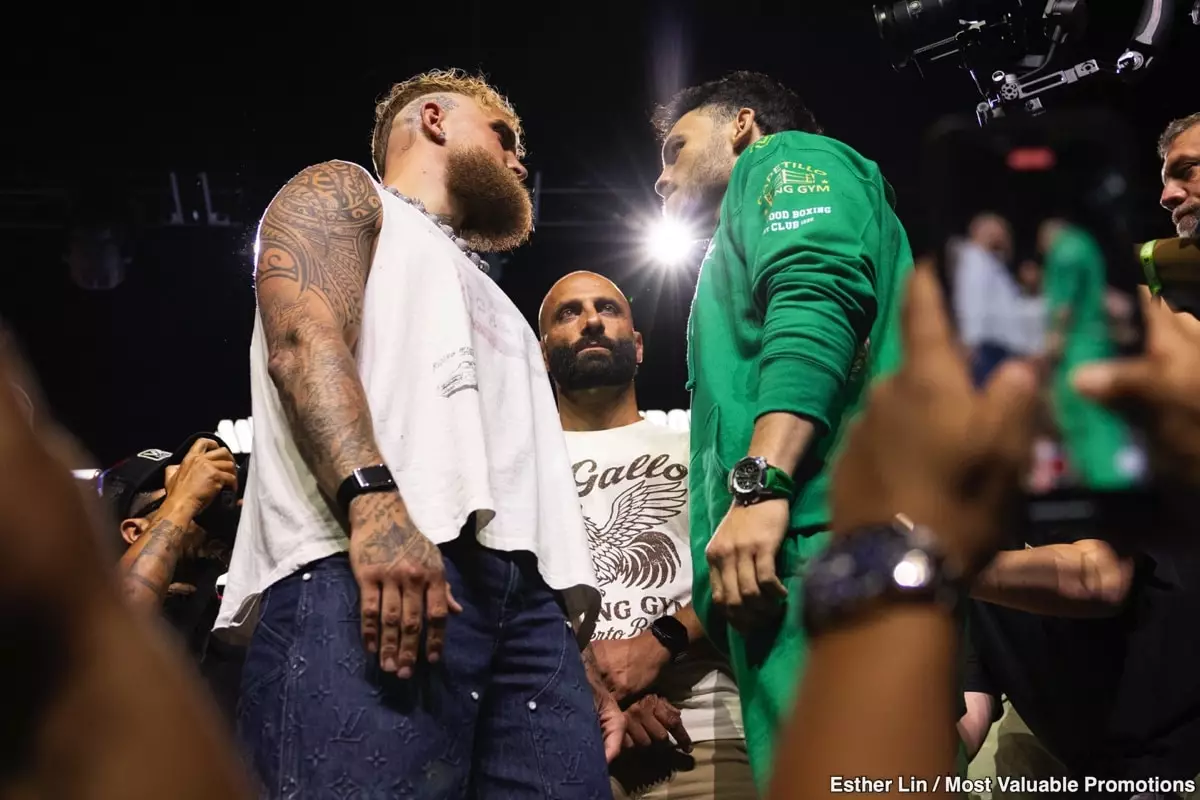When Jake Paul first transitioned from YouTube celebrity to professional boxer in early 2020, few in the combat sports community took him seriously. Over five years later, the conversation surrounding him is still contentious but undeniably more complex. While his boxing skills may not rival seasoned pros, Paul’s impact as a promoter and attention magnet has left an unusual yet significant imprint on the sport. His ability to land two boxing events on Netflix showcases a savvy use of platform and publicity that most newcomers fail to achieve. Whether critics appreciate it or not, Paul has managed to bring boxing to mainstream audiences, particularly younger fans who otherwise may not follow the sport.
The Strategic Matchmaking: Gimmick or Genius?
Jake Paul’s early professional bouts featured fighters known more for their MMA credentials than boxing prowess. Opponents like Anderson Silva, Nate Diaz, and Tyron Woodley—while iconic MMA figures—exemplify a carefully curated fight roster designed to attract varied fan bases and generate buzz. This strategy undoubtedly redefined how crossover fights can be used to boost viewer interest. Yet, this also sparked intense debates about the legitimacy of Paul’s boxing career. Detractors argue that facing “faded” or out-of-prime athletes diminishes Paul’s accomplishments. Yet here’s the crux: these opponents were not pushovers by default; each brought a spotlight to the ring and tested Paul’s evolving skill set.
Paul’s victories, particularly his decisive stoppage of Woodley in their rematch, underscored his capacity to improve and adapt in the ring. Such wins lent credibility to his claims as the sport’s “bad boy” who could back up his bravado. His bouts were never purely about pure boxing excellence but combined entertainment and athletic progression, a hybrid formula that challenges traditionalist views of boxing careers.
The Harsh Reality of Facing True Boxing Pros
The glaring gap in Paul’s rise became evident during his fight against Tommy Fury, a legitimate professional boxer and the younger brother of heavyweight champion Tyson Fury. In this match, Paul appeared visibly outclassed, losing by decision and confirming skeptics’ suspicions that his previous victories were inflated by the quality of competition. This loss highlighted a fundamental truth about Paul’s career: while he can dominate crossover opponents, when pitted against traditional boxers of caliber, his limitations surface starkly.
His impending showdown with Julio Cesar Chavez Jr. further complicates perceptions. Chavez Jr., a former world champion, carries both the weight of a famous boxing lineage and a recent turbulent career marked by inconsistent performances and questionable commitment. His split-decision loss to Anderson Silva, an MMA fighter, years ago and his recent six-round win over another MMA veteran, Uriah Hall, illustrate a decline that seems less about skill and more about willpower and lifestyle choices.
Who Holds the Edge: Youthful Hype or Fading Legacy?
Chavez Jr.’s prime is clearly in the rearview mirror, yet his boxing pedigree and raw experience pose genuine threats to Paul. Unlike Paul, who is still learning the ropes and meticulously crafting his boxing identity, Chavez Jr. once stood among elite middleweights. That pedigree cannot be discounted, even amid declining physical prime and motivation. However, the uncertainties around Chavez’s current condition make betting against Paul seem less risky, despite Paul’s relative inexperience against traditional pros.
It’s worth noting the betting odds frame Paul as a moderate favorite, mainly due to the unpredictability surrounding Chavez Jr.’s form and commitment. Strategically, Paul’s youth, momentum, and recent fight activity offset Chavez Jr.’s experience edge. Paul’s likelihood of winning by decision reflects the expectation of a measured, tactical fight rather than a brutal knockout. This prediction aligns with the idea that Paul’s team will approach the bout with a calculated plan, leveraging conditioning and ring IQ developed over multiple years.
Beyond the Main Event: Hidden Gems on the Undercard
While the main focus often remains on Paul’s story, the undercard offers fighters whose careers may hold greater pure boxing interest. Gilberto Ramirez versus Yuniel Dorticos promises a competitive clash between two skilled heavyweights hungry for recognition. Similarly, the matchup featuring Floyd Schofield and Tevin Farmer suggests an intriguing battle blending experience and hunger. In an event overshadowed by Paul’s polarizing presence, these fights could remind fans of boxing’s technical beauty and grit, offering a refreshing contrast to the spectacle-driven headline bout.
In assessing Jake Paul’s impact in boxing, it’s clear that he simultaneously challenges and reinforces traditional boxing narratives. His career is a compelling study in the growing influence of entertainment, media savvy, and strategic matchmaking in a sport struggling with modern relevance. Love him or loathe him, Paul is forcing boxing to rethink its boundaries and audience engagement in the 21st century.

